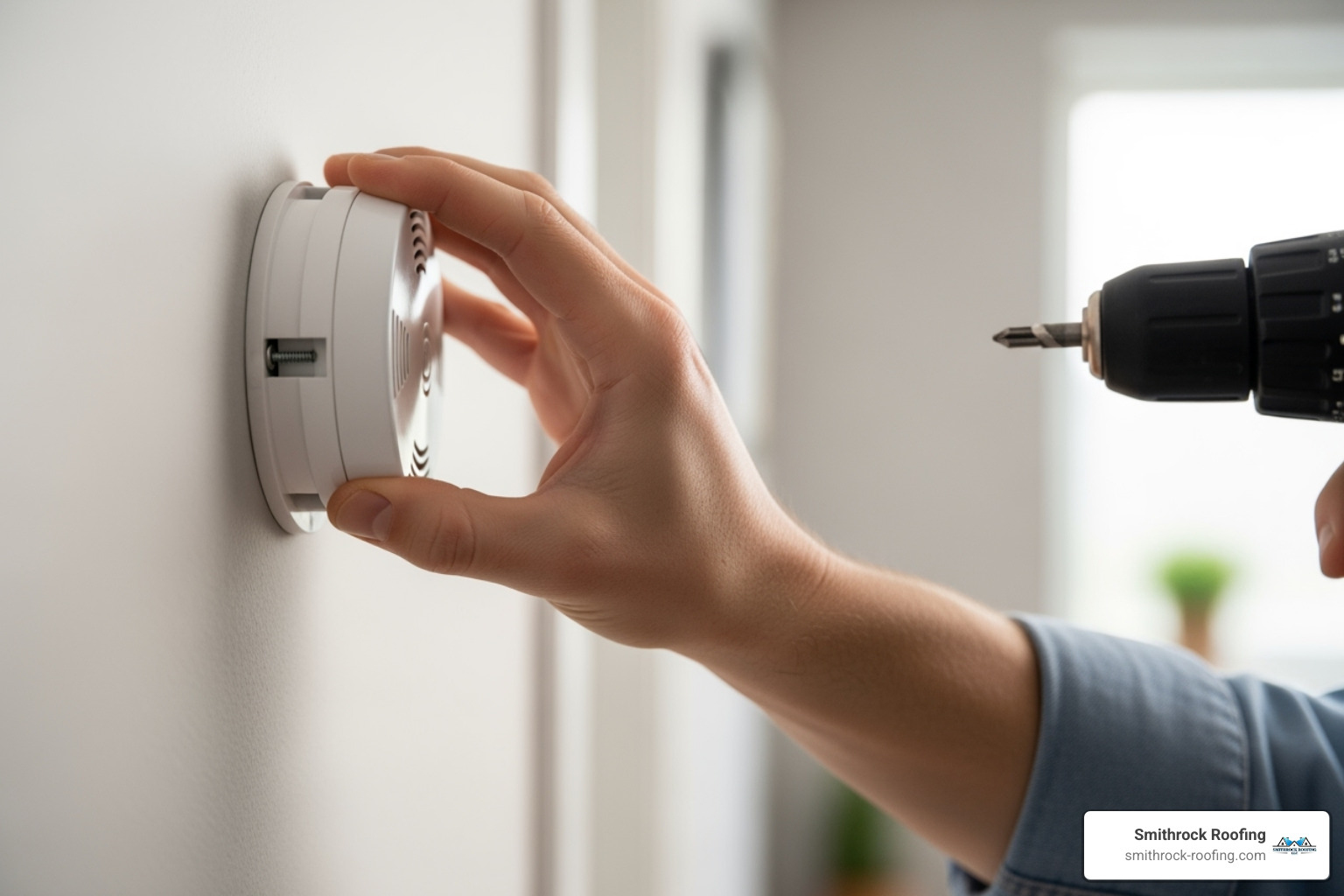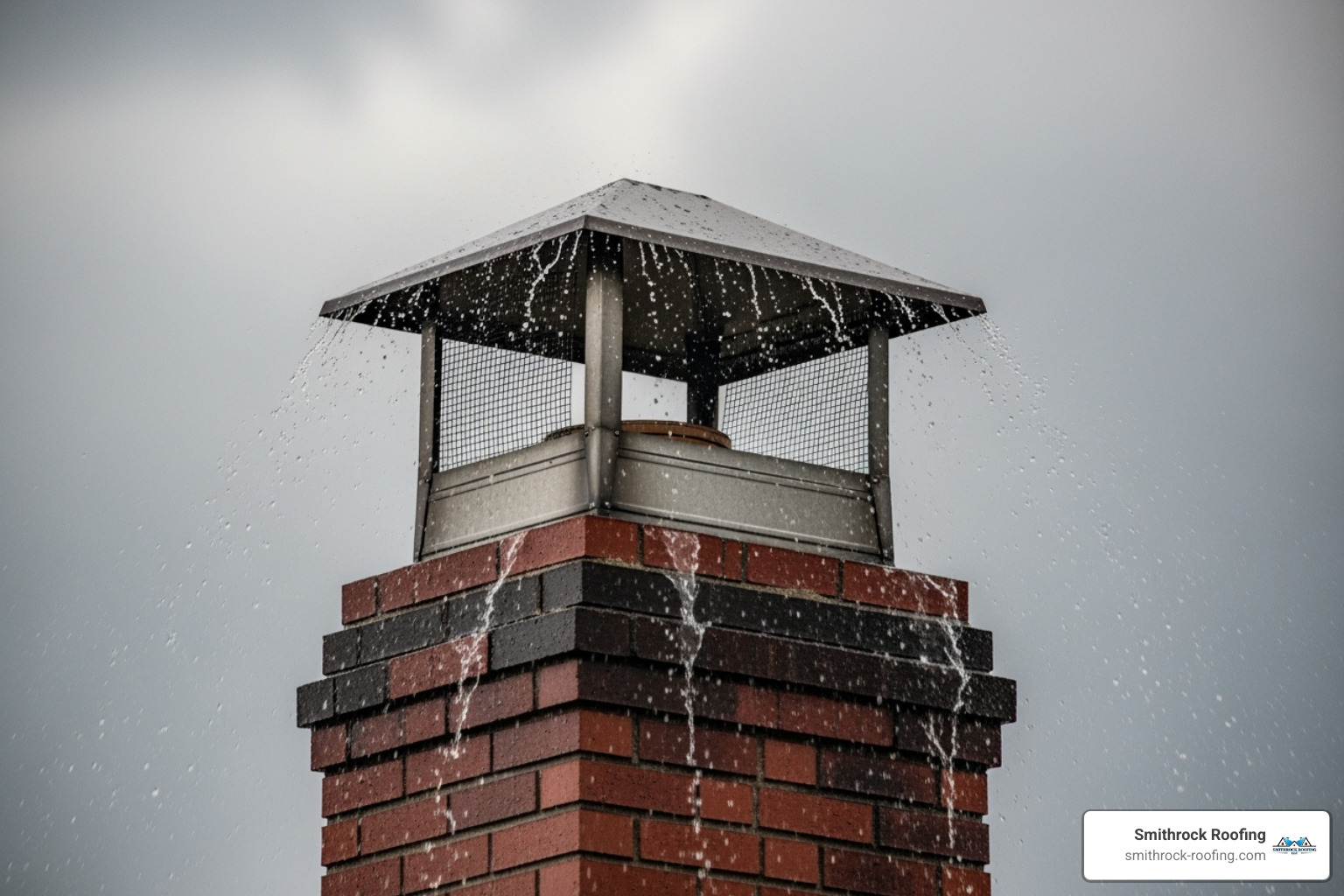Chimney covers to stop birds are the most effective solution for preventing feathered intruders from turning your chimney into a dangerous nesting site. While birds are a delightful part of nature, a nest in your chimney can lead to serious risks, including house fires, dangerous gas buildup, and health hazards for your family.
A bird’s nest might seem harmless, but it’s made of highly flammable material. Nests can block your flue, causing deadly carbon monoxide to back up into your home and creating a severe fire risk. In fact, chimney blockages from nests are a leading cause of the thousands of chimney fires that occur each year. Beyond the fire danger, bird droppings can carry diseases that pose a health risk to your family.
The good news is that prevention is simple. A properly installed chimney cover, such as a standard cap or a specialized cowl, creates a physical barrier that birds cannot bypass. This guide will walk you through everything you need to know about protecting your chimney, from understanding the dangers to choosing and installing the right solution for your home.

Before diving into solutions, it helps to understand why birds are so attracted to chimneys. An uncapped chimney offers an ideal combination of shelter, safety, and warmth, making it a five-star resort for nesting birds. This is why simply hoping they’ll go elsewhere isn’t a reliable strategy and why chimney covers to stop birds are so essential.

To a bird, your chimney is the perfect place to raise a family. It offers a unique combination of features that are highly desirable for nesting:
These factors make chimneys a prime target for nesting birds, who actively seek them out rather than stumbling upon them by accident.
Catching a bird problem early is key to preventing serious hazards. Be on the lookout for these common signs:
If you notice any of these signs, it’s important to act. These are not just minor annoyances but warnings of the potential fire and health risks discussed in the next section.
A bird’s nest in your chimney is more than a nuisance; it’s a genuine danger that can threaten your family’s safety and your home’s integrity. Understanding these risks underscores why preventative measures are so important.

Bird nests are made of highly flammable materials like twigs, grass, and leaves. When packed into a chimney flue, a nest becomes a tinderbox. An ember from your fireplace can easily ignite the nest, leading to a dangerous chimney fire that can spread to your home’s structure. Research shows that thousands of residential fires start in chimneys each year, many caused by blockages.
A nest also restricts ventilation, which causes two critical problems:
Bird droppings can harbor dangerous pathogens. The warm, sheltered environment of a chimney is a perfect breeding ground for fungi and bacteria that can make your family sick.
Before you attempt to remove a nest, be aware of the legal implications. Many common chimney-nesting birds, like the Chimney Swift, are protected under the federal Migratory Bird Treaty Act. This act makes it illegal to disturb or remove an active nest containing eggs or young birds. Violations can result in significant fines.
If you find an active nest, you must wait until the young birds have left on their own. During this time, your chimney will be unusable. This is why prevention before nesting season is critical. Installing chimney covers to stop birds in late winter or early spring avoids this legal and safety dilemma entirely.
If you find an active nest, call wildlife professionals for guidance. They can help you handle the situation safely, humanely, and legally.
A chimney cover is your best line of defense, creating a physical barrier that birds cannot bypass while allowing smoke to vent safely. With several types available, it’s crucial to select one that fits your chimney, climate, and needs.

Different covers use a similar principle—a barrier—to keep birds out. The key is the combination of a solid top and side mesh screening.
For all types, the mesh screening is critical. A 3/4-inch or 5/8-inch mesh is typically recommended to block birds without restricting airflow.
Picking the right chimney covers to stop birds requires considering several factors:
| Material | Durability | Rust Resistance | Aesthetics |
|---|---|---|---|
| Stainless Steel | Excellent | Excellent | Modern, clean look |
| Copper | Excellent | Excellent | Develops attractive patina over time, classic look |
| Galvanized Steel | Good to Moderate | Moderate | Functional, industrial look, prone to eventual rust |
Standard caps don’t fit every chimney. If you have an unusual flue size, multiple flues, or a historic chimney, a custom-fitted cap is the best solution. A custom cap ensures a perfect fit with no gaps for pests to exploit, providing superior protection against animals and weather.
Multi-flue caps are an excellent custom solution for chimneys with more than one flue, covering the entire crown with a single, clean-looking unit. At Smithrock Roofing, our expertise in chimney services allows us to design and install custom caps from premium materials that provide decades of reliable protection and improve your home’s appearance.
While their main job is to stop birds, chimney covers to stop birds are multi-functional devices that offer a range of other benefits for your home, safeguarding its structure and improving safety.

Water is a chimney’s worst enemy. A chimney cap acts as an umbrella, blocking rain and snow from entering the flue. This prevents moisture from seeping into the masonry, which stops the damaging freeze-thaw cycle that causes mortar joints to crack and crumble. It also protects metal components like dampers and liners from rust and corrosion. Protecting your chimney is an integral part of maintaining a healthy roofing system, and a cap is a critical component of that protection.
A chimney cap provides crucial protection beyond just birds:
A chimney cap can also help reduce your energy bills. It prevents cold downdrafts from pushing outside air into your home on windy days. It also provides an extra barrier to stop conditioned indoor air—whether heated or cooled—from escaping up the chimney. This helps your HVAC system work more efficiently, saving you money over time.
Proper installation is key to a chimney cover’s effectiveness. While a DIY approach might seem tempting, working on a roof carries significant risks, making professional installation the safer and more reliable choice.
Installing chimney covers to stop birds is a precise process. A professional will:
While DIY projects can be rewarding, installing a chimney cap is one job best left to professionals. The risks of DIY often outweigh the benefits:
Choosing a professional like Smithrock Roofing ensures the job is done correctly and safely. Our experienced team has the right tools and expertise, and our work is backed by a warranty for your peace of mind.
Even a professionally installed cap needs some maintenance. Here are a few key tips:
For longevity and performance, stainless steel and copper are the best choices. Both are highly durable and resistant to rust and corrosion. Copper develops an attractive patina over time, while stainless steel offers a clean, modern look. Galvanized steel is a more budget-friendly option, but its protective zinc coating will eventually wear away, leading to rust and a shorter lifespan.
No. It is illegal and inhumane to trap birds inside a chimney. Many species, like the Chimney Swift, are federally protected, and disturbing an active nest can result in hefty fines. If you have a nest, you must wait until the young birds have grown and left on their own. During this time, do not use your chimney. Once the birds are gone, have the chimney professionally cleaned before installing a cap. The best approach is prevention: install chimney covers to stop birds before nesting season begins in the spring.
A properly sized and installed chimney cover will not negatively affect your fireplace’s draft. In fact, some designs can improve draft by preventing downdrafts caused by wind. If you experience smoke backing up into your room after a cap is installed, it’s likely due to one of three issues: the mesh is clogged with debris or creosote, the cap is improperly sized, or there was a pre-existing draft problem with your chimney. A certified chimney professional can diagnose and fix the issue.
As this guide has shown, the dangers of birds nesting in your chimney—from fire hazards to health risks—are serious. A high-quality, professionally installed chimney cover to stop birds is the most reliable and humane solution. It’s a straightforward investment that protects your property, prevents costly damage from moisture, stops dangerous embers, and gives you peace of mind.
At Smithrock Roofing, we specialize in comprehensive home exterior solutions, including the installation of durable and effective chimney covers. Our expertise in chimney services is a natural extension of our work with roofing systems, and we understand how to protect your home as an integrated whole.
We proudly serve communities across North Carolina, including Winston-Salem, King, Clemmons, Lewisville, Pilot Mountain, East Bend, Mt. Airy, Kernersville, Siloam, Danbury, High Point, Trinity, Pfafftown, Tobaccoville, Greensboro, Walnut Cove, Belews Creek, Rural Hall, Pinnacle, Bethania, Advance, Wallburg, Horneytown, Union Cross, and Midway.
When you choose us, you get a perfectly fitted solution crafted from premium materials like stainless steel or copper, installed with professional attention to safety and detail. Our work is backed by our warranty for your confidence and protection. Let us ensure your chimney is secure, so you can enjoy your home worry-free.
Ready to protect your home? Contact us today for a comprehensive chimney and roofing assessment.

Smithrock Roofing © Copyright 2025 • All Rights Reserved • Privacy Policy • Maintained by Mongoose Digital Marketing